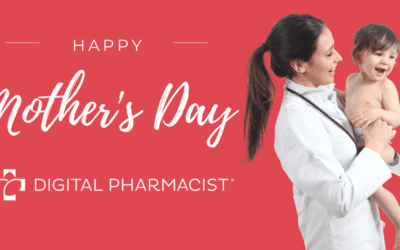There’s a lot to consider when starting a pharmacy and it’s crucial to have a plan and the resources in place to guide you from conception to grand opening.
To help simplify the process, we’ve created a short checklist of important steps for starting your own pharmacy so you can stay on the right track.
Download your free pharmacy opening checklist here.
How Profitable Is Owning a Pharmacy?
Compared to a lot of other industries, pharmacy profit margins are quite high. According to the 2019 NCPA Digest, the average pharmacy’s gross profit is nearly 22%. But as with any other business, profitability in pharmacy depends on a lot of factors, such as the state of the market, the fluctuating cost of goods, and how individual businesses are managed.
Today’s pharmacists face rising drug costs, unpredictable DIR fees, and competition from on-demand healthcare services and big-box stores, which can decrease revenue and profit. Pharmacy profitability depends increasingly on patient experience and offering technology and solutions that simplify communication and care.
At Digital Pharmacist, we’ve seen clients increase their profitability by offering mobile refills, leveraging social media ads, and automating patient communication.
How Do I Start a Successful Pharmacy?
Successful businesses start with the end result in mind. By thinking strategically and creating a long-term plan for your pharmacy, you’ll always have a roadmap and goals to work towards. Determining your target market, and how you can serve them, is one of the best foundations for a profitable pharmacy and should be front and center of any plan you make.
With nearly 21,700 independent pharmacies in the US, successful pharmacies must find ways to stand out from the competition. Creating a clear and cohesive pharmacy brand will help you combine visual identity with a unique backstory and articulate your pharmacy’s standout qualities to your target market.
How Do I Choose a Pharmacy Location?
Finding the right pharmacy location starts with assessing local competition and potential patient base. Larger towns can mean more potential patients but also more pharmacies, so it’s important to do your due diligence and narrow your search to several key areas first.
Once you’ve found a good area for your pharmacy location, these factors can help you identify the perfect site:
- Accessibility of site and its visibility
- Size of location relative to your plan for growth
- Previous tenant history, especially previous pharmacies
- Proximity of complementary healthcare businesses
6 Steps to Consider When Opening a New Pharmacy
Ready to start your pharmacy? Here are six essential steps you’ll need to take before opening those doors.
1. Get Professional Advice
Going into business for yourself doesn’t mean you should do it by yourself. Creating a team of expert advisors is key to starting and building a successful business, especially in a highly-regulated field like pharmacy.
Here are some of the people you’ll want to add to your network:
- Business accountant or financial advisor
- Insurance or real estate agent
- Healthcare business lawyer
- Pharmacy designer
- Industry mentor, such as an established pharmacy owner
These professionals will not only be able to offer advice and review your opening to-do list, but they can also become a valuable part of your business team down the road.
2. Determine Your Business Plan
A business is only as good as the plan you create for it. Your pharmacy business plan should include:
- Executive Summary. A high-level summary of the entire business plan for potential investors.
- Description of Business. An introduction to the business as a whole, from pharmacy branding and target market to potential location, team, and expenses.
- Description of Services. Your pharmacy’s main offerings, prescription or retail stock, healthcare or speciality services, and other revenue sources.
- Marketing Plan. A breakdown of your competition, SWOT analysis of your own business, and strategies for marketing and sales.
- Financial Plan. Financing sources and information as well as a summary of potential revenue and expenses, including any upfront costs.
3. Hire the Right People
Building a good pharmacy team is an investment in your pharmacy’s future and you want to get it right on the first try. The team of industry experts and professionals you’ve created can help advise you as you focus on staffing your pharmacy.
Start by creating manuals for each open position so you can stay consistent in your search and retain good employees. They should not only outline the job description but also your pharmacy’s values, procedures, and policies.
Establish a hiring process upfront with assessments that test communication, skills, experience, knowledge, and teamwork and try to reserve interviews for the best candidates only. Your goal is to hire the people who can help create that ideal company culture and share your company values.
4. Obtain the Right Permits
Pharmacy is a highly-regulated industry, so it’s crucial to have all the right paperwork in place before you open your doors. To start, you’ll need to fulfill basic business requirements, such as registering with your state, applying for a unique tax number, and opening a business bank account.
Then, research local, state, and federal permits and licenses for pharmacy operation and pharmacist requirements if you plan to practice in your own location. Though they may vary by location, these generally include:
- State permit or license
- Controlled substance registration
- National Council for Prescription Drug Programs (NABP/NCPDP) number
- Drug Enforcement Agency (DEA) number
- National Provider Identifier (NPI) number
5. Finance Your Pharmacy
There are many different ways to finance a new pharmacy. Having a financial advisor on hand to help you narrow down your choices can save time and money in the long run. Whether you pursue a traditional bank loan, Small Business Administration (SBA) funding, or investment sources, most potential backers will want to see:
- Upfront owner investment
- Good credit score
- Plan for sufficient working capital
Make sure your business plan addresses all three major types of funding, which include build-out costs, stock inventory, and operating expenses. Remember to build in extra for cash flow once you start filling prescriptions to allow for reimbursement delays.
6. Prepare for Opening
Once the major decisions have been made, you can begin to think about how your business will operate once the doors are open. Here are a few things to consider before celebrating your new business:
- Digital tools. Maximize efficiency and your customer experience with a pharmacy management system (PMS) and digital engagement solutions like interactive voice response (IVR) and secure messaging.
- Ordering inventory. Start with a sample order of OTC and prescription medications, vaccinations, and other stock until you’ve built up a relationship with your wholesalers.
- Store flow and design. Try to envision your pharmacy layout from a patient’s perspective and make sure products, staff, and counters are positioned to appeal to them.
- On and offline advertising. Promote your opening ahead of time by posting signage in high-traffic areas, pursuing publicity in local publications, and creating a digital marketing strategy for your pharmacy.
Future-Proof Your Pharmacy Business
At Digital Pharmacist, our goal is to transform the way you do business. Our all-in-one digital engagement suite helps pharmacies connect with patients, operate efficiently, and increase growth. With HIPAA-compliant solutions that include cloud-based communication and digital marketing and management, we give you the tools to promote adherence and stand out from the competition.
To learn more about how Digital Pharmacist can support your pharmacy’s growth, get in touch with us today.


